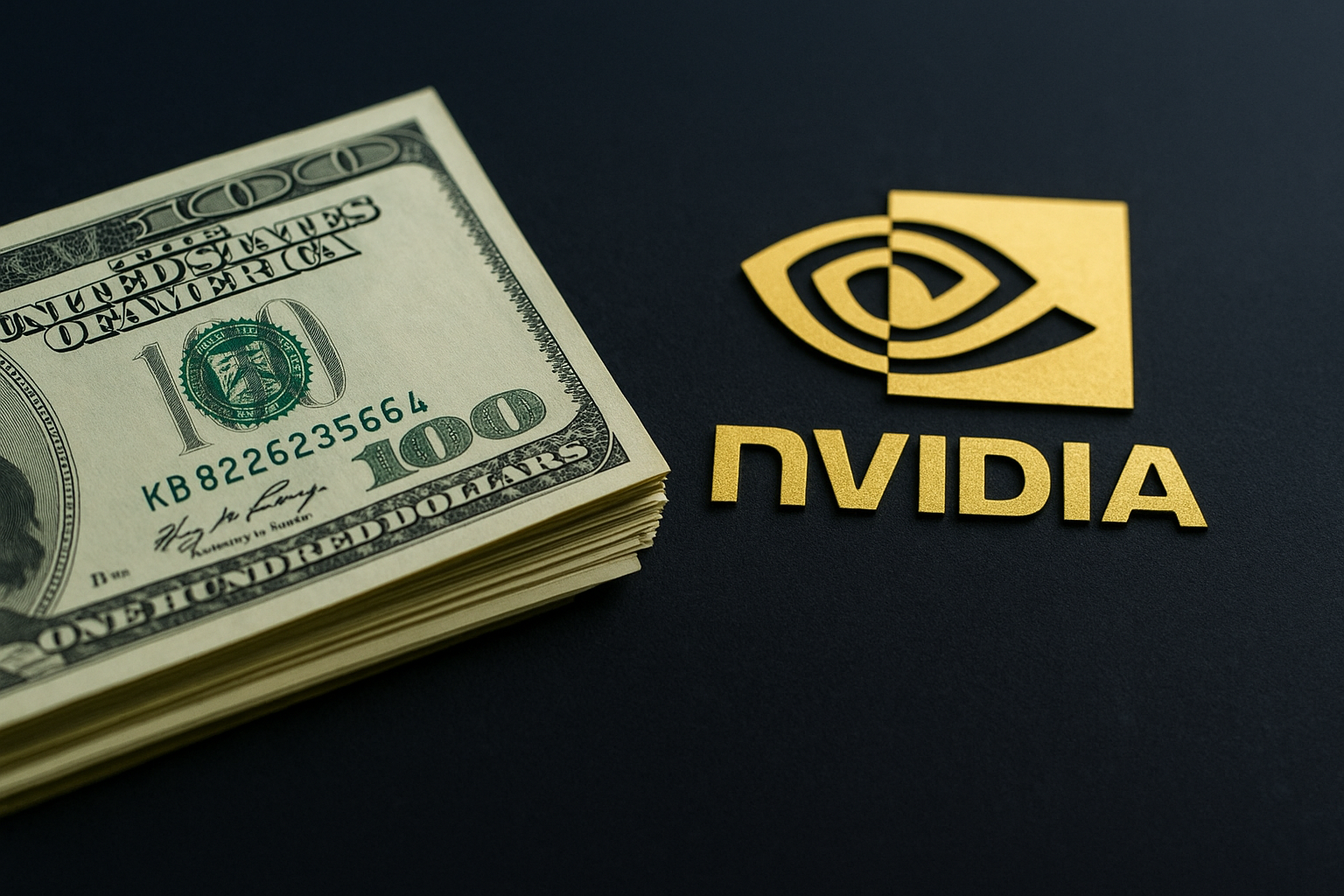Few companies in history have reshaped the investment landscape like Nvidia. Now, the chipmaker that became synonymous with the artificial intelligence (AI) revolution is approaching another record — a potential $5 trillion valuation — fueled by relentless demand for its AI processors and massive new government contracts. Investors across global markets are watching closely as Nvidia continues to define the next phase of technological and market growth.
The Market’s New Titan
Nvidia’s stock soared this week following news that it has secured over $500 billion in AI chip bookings, according to Bloomberg and Reuters. These include major U.S. government contracts for national supercomputing programs and AI-driven defense infrastructure. With market capitalization already surpassing $4.8 trillion, Nvidia could soon become the first company ever to cross the $5 trillion threshold, outpacing even Apple and Microsoft.
The rally reflects not only Nvidia’s dominance in high-performance computing but also the scale of global capital migration toward AI infrastructure. Analyst notes from Bloomberg Law emphasize that Nvidia’s strategic position—supplying critical chips to every major AI platform from OpenAI to Amazon Web Services—gives it an unparalleled moat in what is becoming the world’s most lucrative technological race.
Why This Matters for Investors
The AI sector has become the growth engine of global equity markets. Data from Refinitiv shows that over 40% of S&P 500 earnings growth this quarter stems from AI-linked companies. Nvidia sits at the center of this surge, benefiting from both hardware sales and ecosystem expansion through CUDA, its proprietary software architecture.
However, valuation concerns are starting to surface. Nvidia trades at nearly 60 times forward earnings, far above the S&P 500 average of 21. Some analysts, including those at Morgan Stanley and Barclays, warn that current pricing assumes a flawless growth trajectory — one that leaves little room for execution errors or macroeconomic shocks.
Still, capital inflows tell a different story. Institutional funds continue to pour into AI infrastructure plays, with ETF flows hitting record highs. Nvidia’s leadership in the “AI stack”—from chips to software frameworks—keeps it the top institutional holding in most technology-focused funds.
AI-Capex Boom and Global Spillover
Behind Nvidia’s meteoric rise lies a global AI-capex arms race. According to Bloomberg Intelligence, worldwide spending on AI infrastructure could exceed $1.3 trillion by 2027, with datacenter investments accounting for the majority. Companies like Microsoft, Alphabet, and Amazon are expected to double their AI-related capital expenditures over the next 18 months.
The U.S. government’s deepening partnership with Nvidia adds another layer of long-term stability. The company’s chips are now core components in defense simulations, energy modeling, and research AI systems—fields that promise recurring demand insulated from consumer cycles.
Yet, the AI boom’s speed introduces volatility. As one Reuters analyst noted, “AI spending is real, but its distribution is uneven. Companies leading on innovation will continue to grow, but the second-tier players may face a painful consolidation.”
For investors, this suggests that the easy gains of early AI speculation may be behind us, replaced by a more selective phase emphasizing execution, scalability, and profitability.
Future Trends to Watch
1. Data Center Expansion – Nvidia’s latest Blackwell GPUs are central to hyperscale AI datacenter rollouts across North America, Europe, and the Gulf. Watch for supply-chain updates and capacity reports from TSMC, which produces Nvidia’s chips.
2. AI Software Ecosystems – Beyond hardware, Nvidia’s CUDA and DGX Cloud platforms are creating new recurring revenue streams. Investors should monitor growth in its software licensing business, a potential driver of margin expansion.
3. Regulatory and Geopolitical Risks – U.S. export restrictions on AI chips to China could limit near-term sales growth. However, Nvidia’s diversification into Europe and the Middle East mitigates some exposure. The next six months of trade policy decisions could significantly affect its trajectory.
4. Competition and Market Consolidation – AMD and Intel are both ramping up AI-chip production, but Nvidia’s software and developer ecosystem remains a major barrier to entry. A sudden shift in enterprise preferences—or breakthrough in open-source AI accelerators—could alter competitive dynamics.
Key Investment Insight
Nvidia represents both the heart and the heat of the AI revolution. For long-term investors, it remains the benchmark for AI-capex expansion, but at these valuations, risk management is essential. Consider balancing exposure through diversified AI-infrastructure funds or by pairing Nvidia with adjacent plays in semiconductor materials, datacenter REITs, and cloud infrastructure ETFs.
In short: the AI boom is far from over—but it’s evolving. The winners of the next phase will be those who can turn infrastructure dominance into sustainable, software-driven profitability.
As Nvidia nears the $5 trillion milestone, one thing is clear: we’re witnessing the defining market story of this decade — a company at the crossroads of innovation, policy, and global investment strategy.
For daily coverage on how AI, markets, and policy shifts are shaping the next generation of investment opportunities, stay tuned with MoneyNews.Today — your trusted source for investor intelligence.





